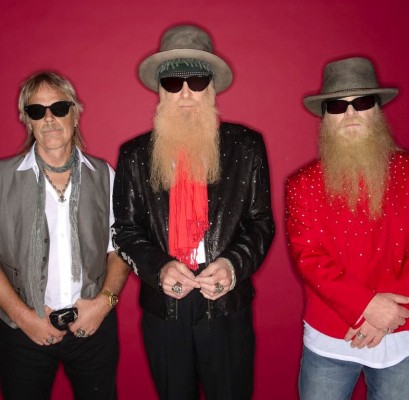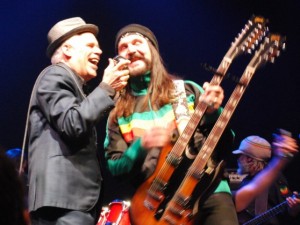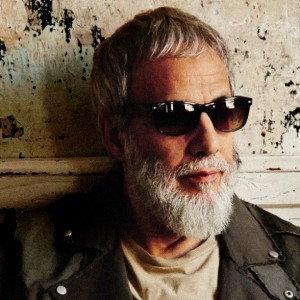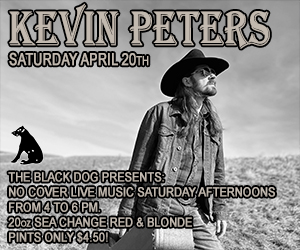Let’s talk about Beard Club
Posted on October 31, 2014 By Mike Ross Culture, culture, Entertainment, Front Slider, Music
 As Rocktober spurts into Movember, it’s the perfect time to explore the effect of beards upon the musicians who sing through them.
As Rocktober spurts into Movember, it’s the perfect time to explore the effect of beards upon the musicians who sing through them.
Do beards shape an artist’s music or is it the other way around? Itchy question. Nobody talks about this sort of thing without getting their ‘staches in a knot, muttering about all those non-existent “hipsters.” Fully bearded Edmonton Journal art critic Fish Griwkowsky expresses the conspiracy of bristly silence nicely: “First rule of Beard Club: Don’t talk about Beard Club.”
These are wise words, even if in uttering them he’s talking about Beard Club.
Yet this is a serious question that demands the most rigorous examination: Is there a connection between facial hair, hair in general, really, plus don’t forget distracting hats, and the substance, style and tone of an artist’s work? Recent studies suggest yes. One study, anyway. A recent unscientific blind test asking captive unlearned listeners to identify bearded bands by sound alone yielded an astonishing 51% accuracy.
Consider two opposite poles of beard-dom from the annals of classic rock: ZZ Top, whose facial hair is so important that it’s part of the brand and even has its own roadies, called “beardies”; and Def Leppard, proudly clean shaven all these years. Which band is better? Sammy Hagar has a beard, David Lee Roth does not. Who was the cooler Van Halen frontman? Does Bono’s chin fuzz make him hip? What about Kenny Rogers’ full-on Grizzly Adams or Burton Cummings’s porn ‘stache or Lemmy’s trademark stash-burns? Who’s the best artist among them? Beards are all part of their brands.

Sam Roberts
The famously bearded Sam Roberts is happy with what he calls “the proliferation of the bearded band.” He equates beards with freedom. “I think it’s a great thing that they’re embracing freedom,” he says. “The beard represents the choice you made to live outside the workaday 9-to-5 world. It’s a higher state.”
Sam might be onto something here. Certainly some bearded bands sound more “free” than their clean-shaven peers. The presence of a mandolin or banjo is a dead giveaway their owners sport facial hair. Folk music, with its luxuriant history of unfurled beardiness, is considered one of the more open genres for creative expression. Since the ascendance of folk music into the popular mainstream, we’re seeing more beards than ever. Even Leonard Cohen is packing hair these days. Hot country, on the other hand, is not generally considered a haven for unfettered creativity. And guess what? Less beards. And the bros who have them usually keep them very neatly trimmed.
While our society has yet to reach “peak beard” – Sam Roberts says that when we see fully uncultivated whiskers on soldiers and office workers “we’ll know we have a victory” – Beard Ubiquity has been achieved. In short, it’s no longer worthy of notice.
 And yet tonsorial dissonance can still be terribly distracting in a live performance. Hats are a huge problem. In country music, ballcaps have replaced cowboys hats as the go-to headgear, which is just as pretentious. And if you see a rock musician wearing any kind of hat, chances are he’s going to get at least one solo during the show. Especially if he plays ukulele.
And yet tonsorial dissonance can still be terribly distracting in a live performance. Hats are a huge problem. In country music, ballcaps have replaced cowboys hats as the go-to headgear, which is just as pretentious. And if you see a rock musician wearing any kind of hat, chances are he’s going to get at least one solo during the show. Especially if he plays ukulele.
The best fashion hair-hat fail in the last two decades has to have been Big Sugar’s last tour in 2011. The show took place at the now-defunct Edmonton Event Centre and saw the ever-evolving bandleader Gordie Johnson sporting long Gregg Allman locks atop which he wore both a do-rag and a toque. A new reggae-loving keyboardist-rapper was resplendent in a medusa of white-guy dreadlocks, with some kind of a poofy newsboy cap on his head. The harmonica player wore a blues fedora, the drummer had a skull cap. The opener Wide Mouth Mason’s frontman Shaun Verreault set the ludicrous tone of the evening by appearing as the suddenly platinum blonde love child of Annie Lennox and Astro-Boy. At least he didn’t have a beard.
Big Sugar fans report being unable to remember anything afterwards but a clashing riot of disruptive hair and hats and hideous combinations thereof. My lasting musical memory is that most of these guys took too many solos – like jazz guys. Jazz musicians seem to be fond of hats, too.
But back to beards. The main reason men grow facial hair is to show off their masculinity – and that desire has to have an impact on the music they make. Or does it? The Moffatts were a Canadian boy band that enjoyed fleeting success in 1998. In one interview, asked about why they wanted to flaunt their newly-sprouted peach fuzz (they must’ve been about 14 or 15 years old at the time), they replied, “Because we can.” Duh. The Moffatts never went anywhere after that, and brother Dave went on to make the final 32 finalists of Canadian Idol in 2005. He was clean shaven by then.

Yusef, formerly known as Cat Stevens
Long ago, in the Beard Age, even women and children had facial hair. Only with civilization and advances in depilatory technology were humans free to bare their faces. This was a bold move because God has a beard, and man is supposed to be made in His image. In some religions, beards are still part of the brand. Orthodox Jews are not allowed to “trim the edges of their beards,” for instance, no allowance in the Old Testament for the idea of not having a beard at all. It’s worth noting that the clean-shaven Gene Simmons, a Jew, once said that he hates klezmer music. Is KISS – unbearded by necessity of their facial paint – cooler than Metallica? James Hetfield often grows a beard. Is he a more convincing metal singer than the clean-shaven right-wing lunatic Dave Mustaine, who was fired from Metallica? Is Yanni still Yanni without his moustache?
Remember, there are no right answers.













